The Dragon's Back and the Soul of Stone: Uncovering the Ancient Secrets of South Africa's Drakensberg
Explore the Drakensberg Mountains, a UNESCO site known as the 'Dragon's Back.' Discover the dramatic Amphitheatre cliff and the world’s largest collection of San rock art, the spiritual legacy of Africa's first people.
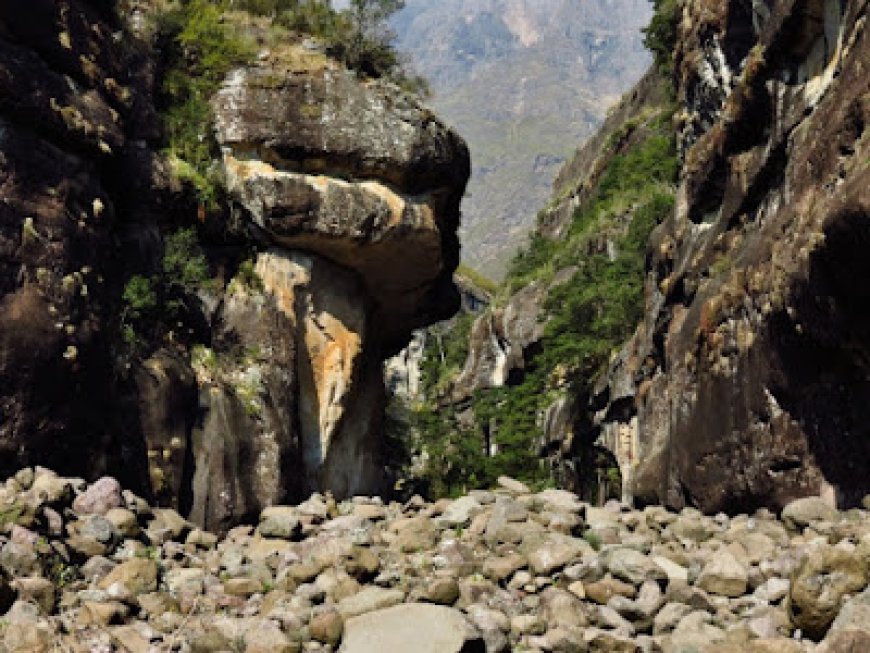
Have you ever stood in front of a mountain range that appeared more like a sleeping big than a barrier? When you first see the Drakensberg Mountains, you get that impression. Tucked away on the border of South Africa and the small, landlocked Kingdom of Lesotho, this colossal spine of rock—aptly nicknamed the "Dragon's Back"—is truly unique. Forget mere altitude; this place demands reverence for its profound spiritual history, not just its staggering height.
The Zulu people know them as uKhahlamba, a beautifully evocative name meaning the "Barrier of Spears." It’s an ancient, dramatic name for what is, quite literally, a massive wall dividing the continent's interior from the lower coastal plains. For me, hiking here felt like stepping into an epic poem—a journey that blends the strenuous thrill of the climb with an intimate, quiet connection to Africa's earliest artistic expression.
Where the Earth Simply Ends: The Escarpment
What exactly makes this range so visually arresting? It all comes down to the Drakensberg Escarpment. This isn’t a gentle slope; it’s a sheer, unrelenting boundary wall, formed by volcanic basalt capping softer rock over millions of years. This epic geological history, spanning over 140 million years, is responsible for the jagged, spiked silhouette that gave rise to the "Dragon's Back" moniker.
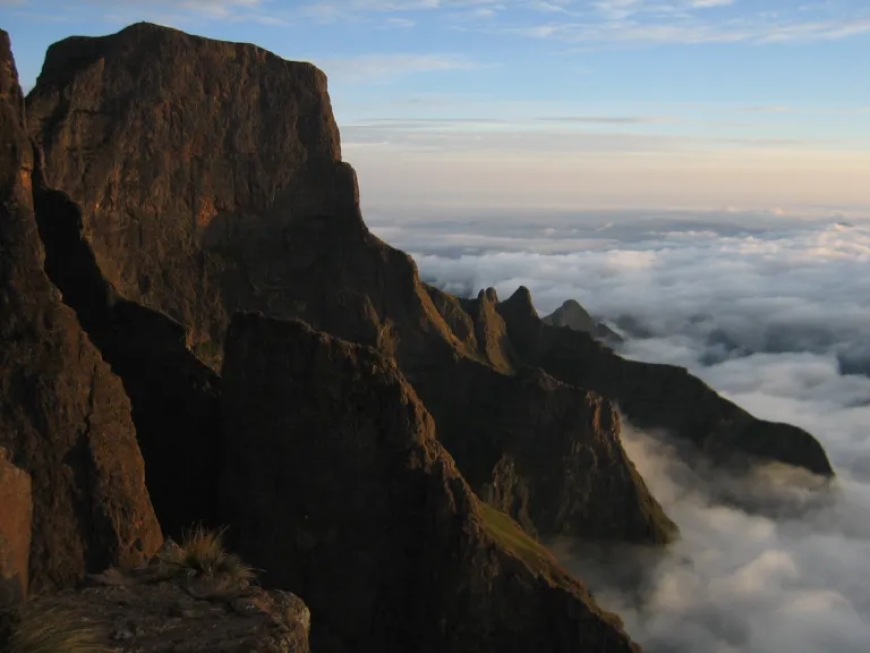
The crown jewel of this formation is undoubtedly the Amphitheatre. If you've never seen it, picture a colossal, concave wall of rock stretching over five kilometers wide, with cliffs that drop a stomach-churning 1,200 meters. And the water! It’s here that the mighty Tugela Falls begins its plunge, tumbling over the edge in a series of breathtaking tiers. Standing at the top—looking out over that vast, sprawling landscape—you feel utterly insignificant, yet completely alive. It’s a raw, pure power that reminds you of how young humanity really is.
The San’s Whisper: A Gallery Hidden in Stone
But please, don't let the sheer vertical scale distract you from the quiet magic. The true soul of the Drakensberg lies not on the heights, but in the dozens of secluded rock shelters and caves below. This area holds the largest collection of San rock art in Africa, a silent, painted record of spirituality that reaches back four millennia.
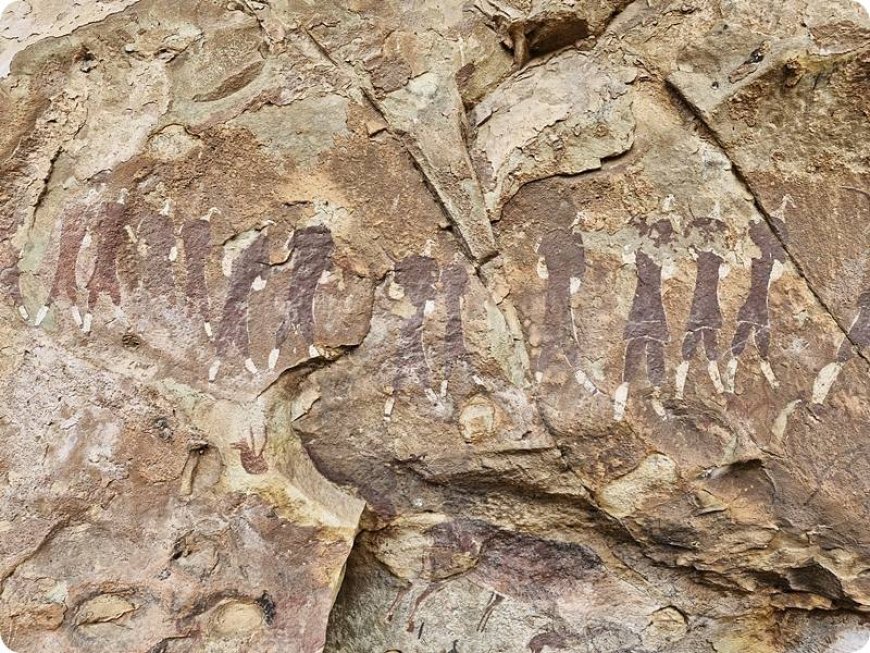
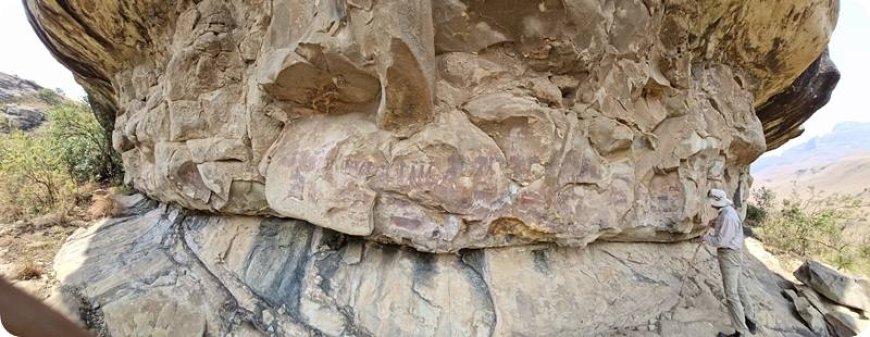
The San, the original inhabitants and master hunter-gatherers of Southern Africa, weren't just sketching pictures; they were painting their deepest religious experiences. Their shelters functioned as sacred spaces—as portals where the tribe’s shamans would journey to the spirit world. Deciphering this art is like cracking the code to an ancient, magnificent worldview.
More Than Just Antelope: The Shamanic Secrets
Why are there so many images of the Eland antelope? This detail is crucial. For the San, the Eland was far more than prey; it was the ultimate sacred animal, believed to be packed with spiritual energy. When you see an Eland painted on the rock, you are seeing a symbol of divine potency.
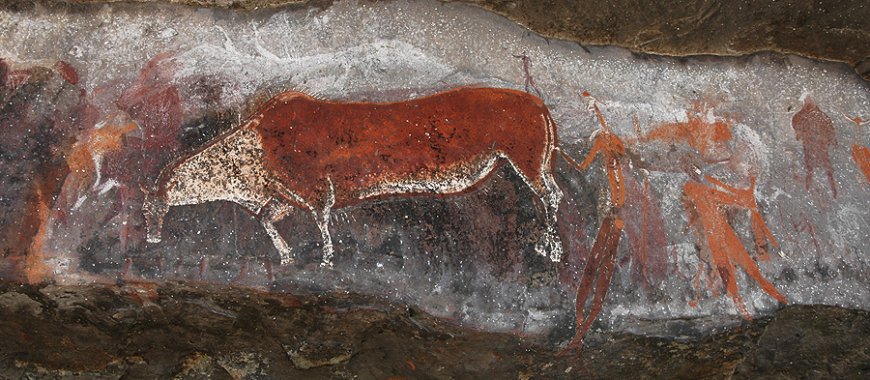
The shamanic trance dance experience is depicted in striking detail in the paintings. Shamans would enter these profound, altered states—sometimes enduring intense physical discomfort, symbolized by depictions of blood flowing from the nose—to gain spiritual power. These visions are captured in the artwork with unsettling clarity:
The Merging: If you look closely, you'll see Therianthropes—figures that combine human bodies with animal heads or hooves. This symbolizes the shaman changing and using the Eland's power to create rain or heal.
The posture: The figures are often shown hunched over. This is more than just a dance move; it mimics the posture of a dying Eland, clearly connecting the animal's sacrifice to the shaman's fleeting "death" during the trance.
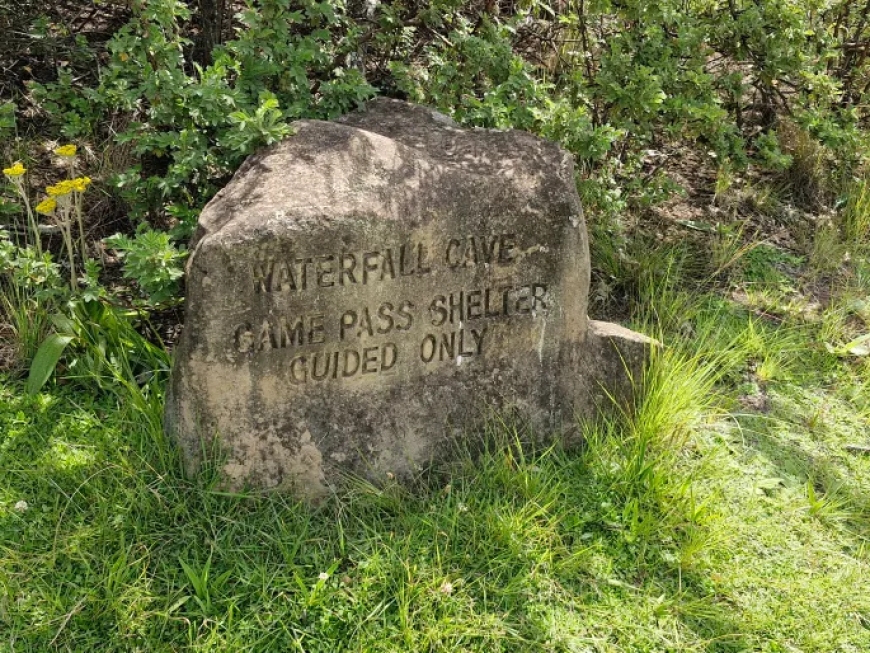
If you visit the Game Pass Shelter near Kamberg, you will see a living document, a guide on San spirituality. These ancient pigments, stubbornly clinging to the rock face after thousands of years, are proof that this mountain is truly a giant scroll upon which humanity’s deepest stories are written.
Final Thought: A Journey for the Soul
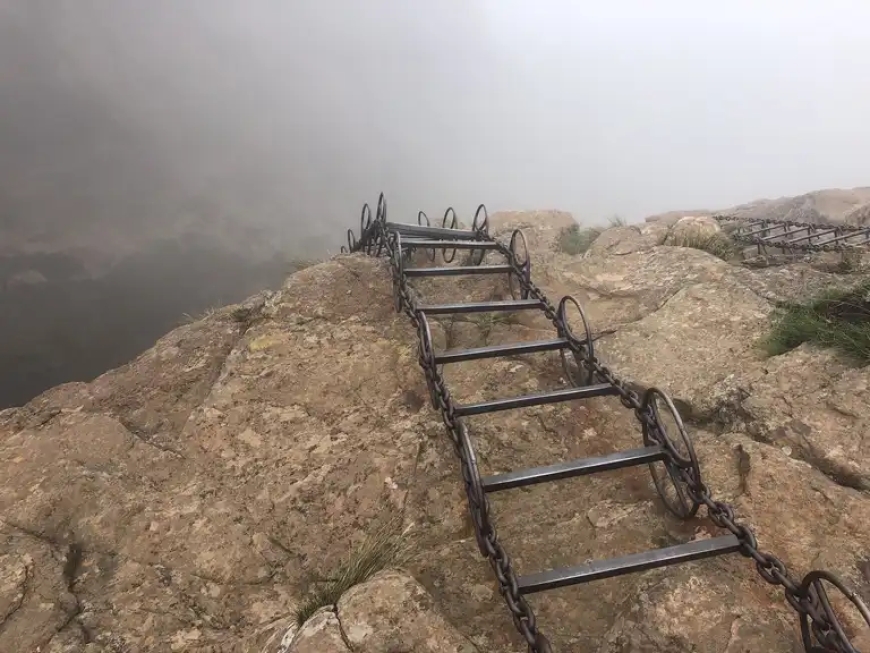
Hiking the Drakensberg is an opportunity to connect with a spiritual current that dates back to the beginning of civilization, not just to reach a peak. You walk beneath the colossal shadow of the Dragon's Back while simultaneously encountering the intimate whispers of the San ancestors in the silent caves. It’s a breathtaking fusion of raw, geological power and sensitive, ancient humanity.
What's Your Reaction?
 Like
0
Like
0
 Dislike
0
Dislike
0
 Love
0
Love
0
 Funny
0
Funny
0
 Angry
0
Angry
0
 Sad
0
Sad
0
 Wow
0
Wow
0
























































































































































































